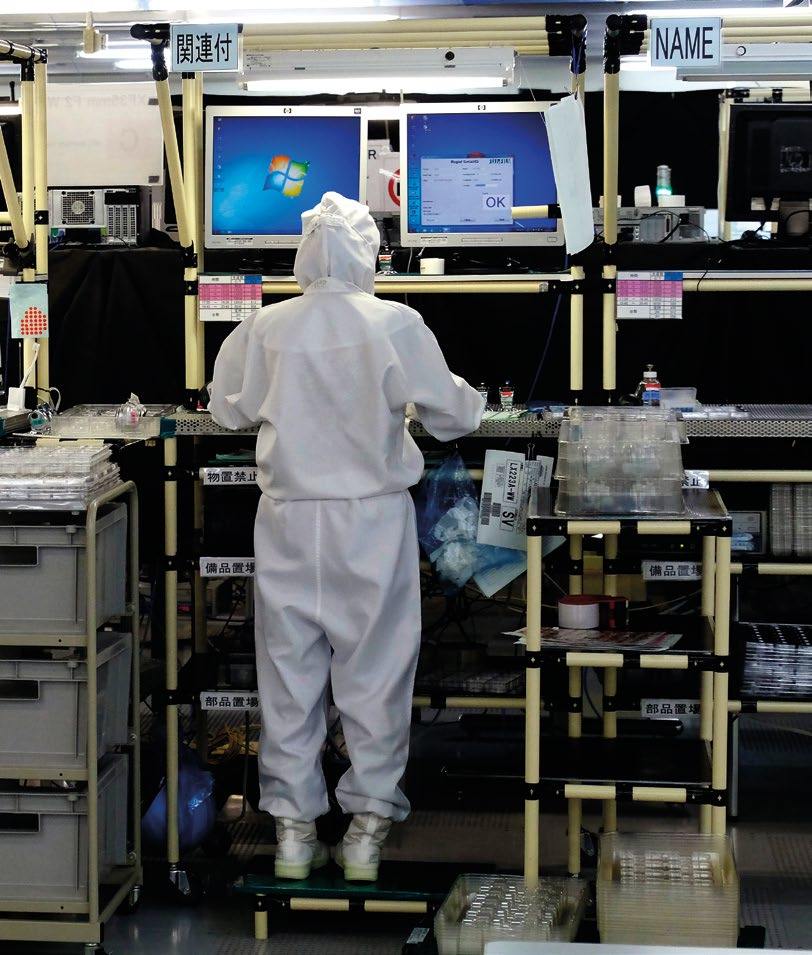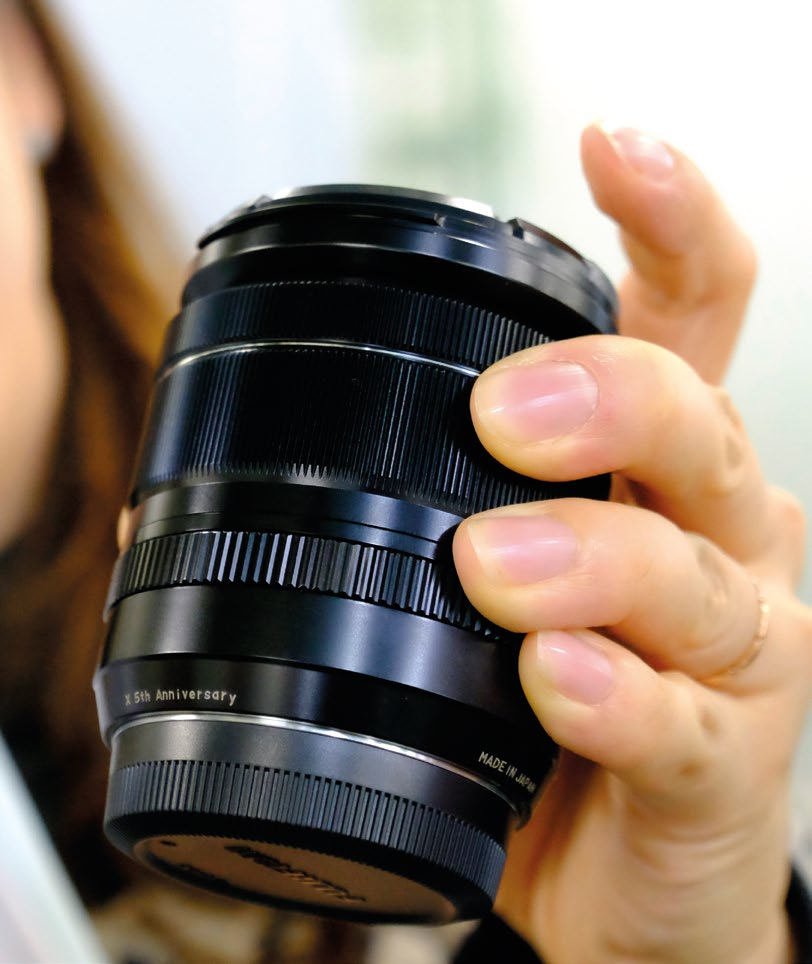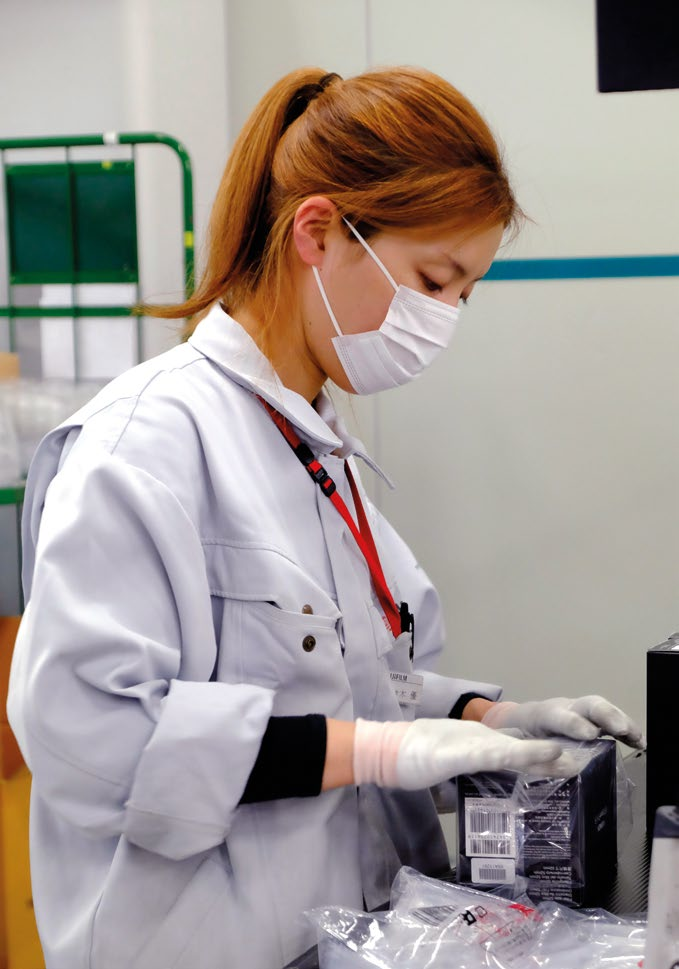“Fuji Photo Optical Company (Ltd) was founded in 1944 and built lenses for several companies, including Leica.”




We were recently in Tokyo for Fujifilm’s X-series cameras’ 5th anniversary, with a visit to Fujifilm’s factory in Taiwa, Japan. That’s where production is completed for many of their products, including the latest XF100-400mm F4.5-5.6 R LM OIS WR lens. Here’s an exclusive look inside Fujifilm.
Fuji Photo Optical Company (Ltd) was founded in 1944, and built lenses for several companies, including Leica. Two of the most notable lenses from this period include the Cristar 50mm F2 and the Cristar 35mm F3.5, and these were followed up in 1954 with a trio of fast lenses under Fujifilm’s own label: Fujinon. Known as the “Fujinon Speed Trio,” this included the 35mm F2, the 50mm F1.2, and the 100mm F2, all exceptionally fast and sharp lenses for the time.
Building on their expertise of building camera lenses, Fuji moved into making their own Fujifilm branded SLRs, later forgoing the 35mm segment to move into medium and large format cameras like the GX645 and the GF670.
Their film cameras have been used by the likes of photographers like Richard Avedon, Annie Leibovitz and Karl Lagerfeld, and now the company hopes the growing popularity of their X-series cameras will rise to the same point.
ALL ABOUT LENS QUALITY
Other than the quality of their digital X-Trans sensors, one thing that Fujifilm is banking on to bring them back to the forefront are their Fujinon lenses.
Designed and manufactured completely to Fujifilm’s own specifications and design, lenses have always been a source of pride for Fujifilm. According to them, their Fujinon lenses are designed so they can resolve the full power of the APS-C sized X-Trans sensor, giving details that equal or surpass what you can find on a typical full-frame DSLR setup.
But to ensure that all their lenses live up to that benchmark, they have to first be put through a series of tests before, during and after assembly.
ASSEMBLED BY HAND
Every Fujinon lens is assembled almost entirely by hand, with every element manually inspected and cleaned before assembly.
Fujifilm’s newest lens is its Fujinon XF 100-400mm F4.5-5.6 R LM OIS WR lens, and the company walked us through its entire production process.
Once all of the 100-400mm’s elements are mounted and assembled, each lens goes through an automated SFR (Spatial
“Fuji Photo Optical Company (Ltd) was founded in 1944 and built lenses for several companies, including Leica.”



Frequency Response) adjustment process, where the lens is evaluated for the sharpness it can capture and adjusted to meet Fuji’s standards. After SFR adjustments, the lenses are sent to another machine that applies UV bonding to fix all the components together.
Next, the assembled lenses are sent for testing to ensure that all the drive mechanisms, including zooming, work properly. Fujifilm also tests focus speed and focus slip at this point, thus ensuring that the lens get to the point of focus fast, and also stops at exactly that point. This means less focus hunting, and speedier lens performance.
MAKING A PERFECT LENS
Other than ensuring that every single lens operates perfectly, tests are also done to ensure that the image quality meets Fujifilm’s high standards.Vignetting


Vignetting tests, which evaluate the vignetting present in the image, as well as the performance of vibration control on the lens, are carried out by having the lenses mounted on a camera body and set to capture images of Fujifilm’s unique test charts.
Special equipment is used to test the AF and aperture control of each lens, as well as resolution level. All tests are done to CIPA standards using a resolution chart, so the benchmarks are industry standard.
After all that is done, the final step is to send the lens for automatic evaluation, in which an automated evaluation device takes the lens through a series of sensory tests, including zoom operation and angle adjustment, to ensure optimal calibration for each and every lens.
MADE IN JAPAN
When that’s all done, each completed lens is sent to packing stations, where they’re registered in Fujifilm’s lens database with a unique SKU number. The lenses are then engraved with a unique serial number (that’s also captured in the system) as well as the words, “Made in Japan,” before being sent for packing.
How does Fujifilm ensure that every box is packed correctly? Each and every package is weighed to an acceptance of +/- 5 grams, to ensure that the right contents have been inserted. Before shipping, every lens gets an appearance check, sensory test, and zoom operation check, so you can be sure the copy that reaches your hands is truly the best copy you can get.
We were told that every XF100-400 lens goes through a total of seven checks before completion. It takes about 220 minutes to complete each lens (by way of comparison, the less complex XF 35mm F2 R WR takes 80 minutes per copy). Because of all the checks taken throughout the process, only about 150 units of the XF100-400 are completed each day by the factory. Knowing the painstaking effort that is put into the construction of each and every lens, we’re firmly convinced that they deserve the “Made in Japan” label.
“Every lens gets an appearance check, sensory test, and zoom operation check, so you can be sure the copy that reaches your hands is truly the best copy you can get.”
























